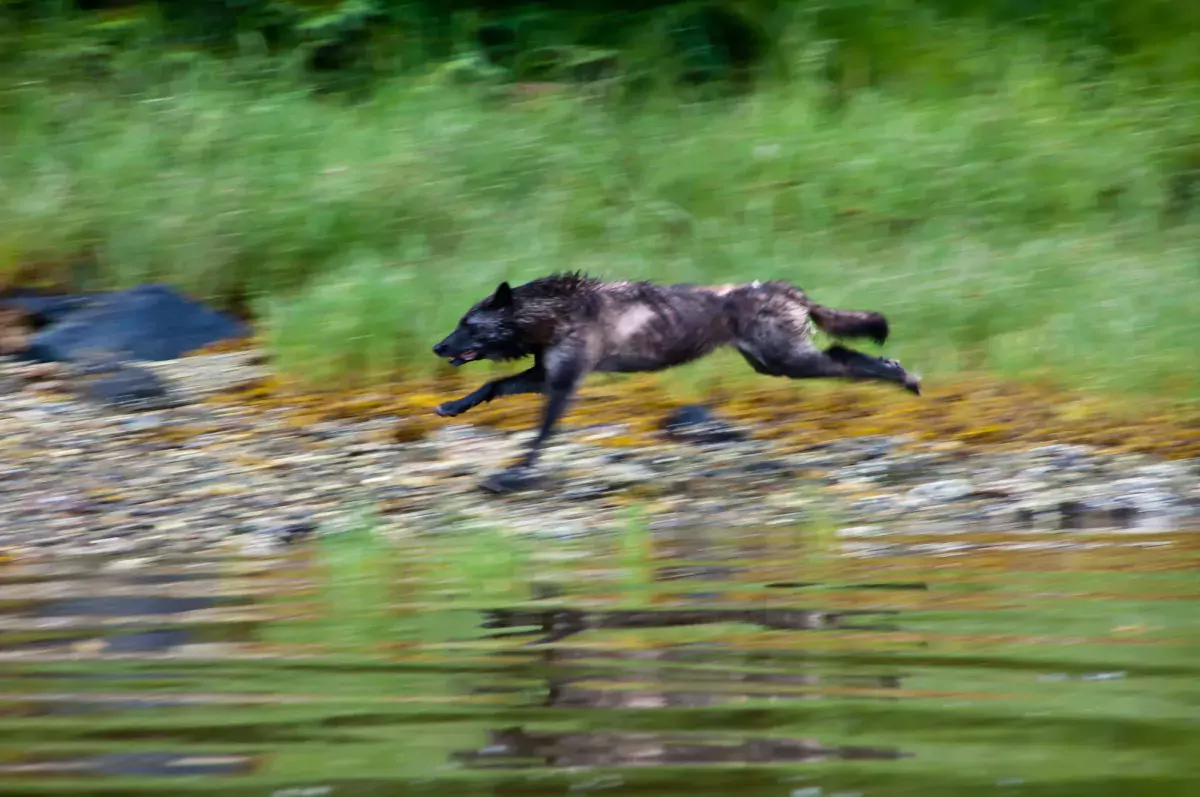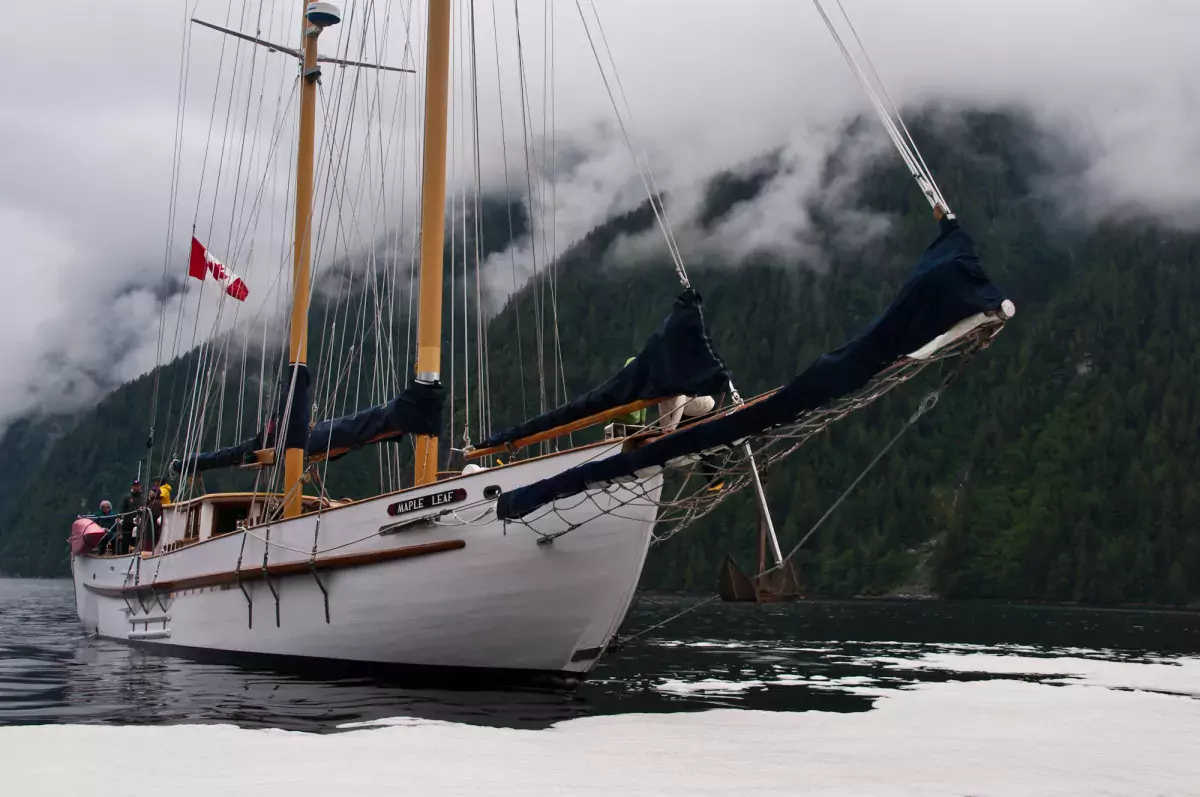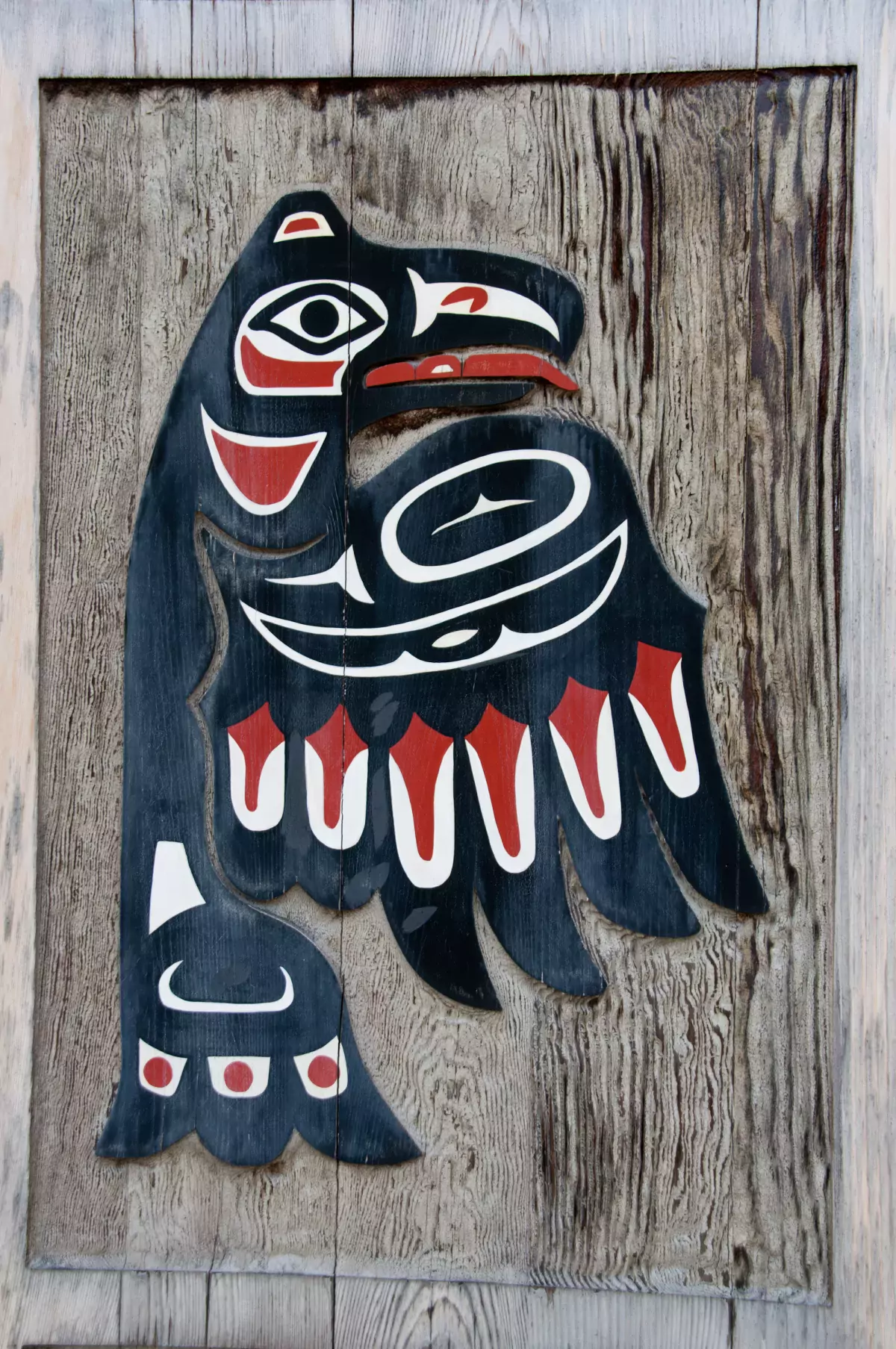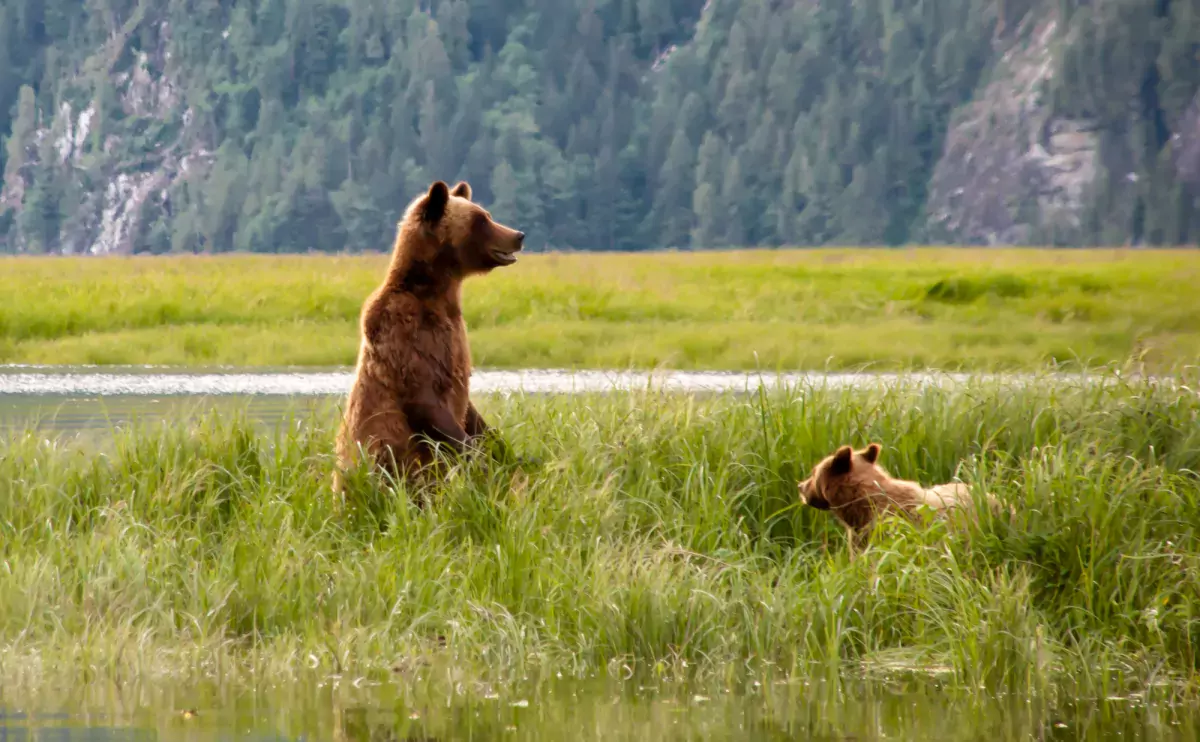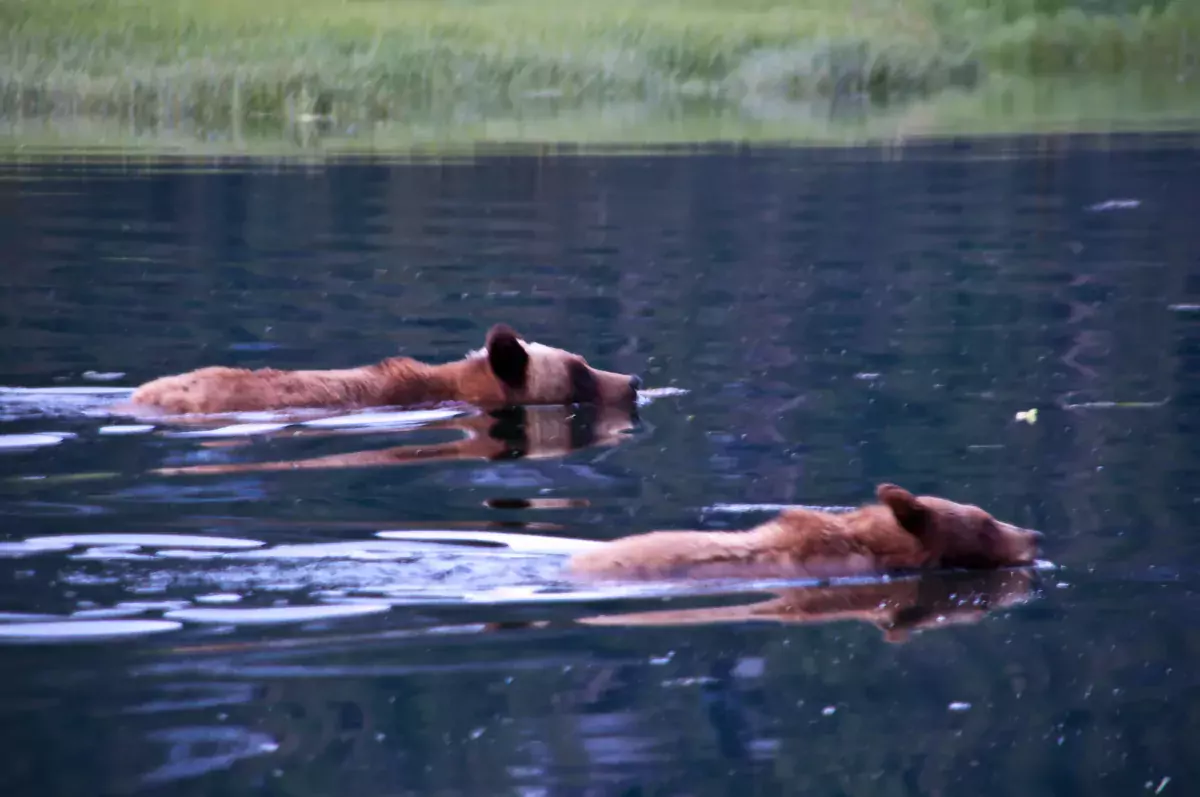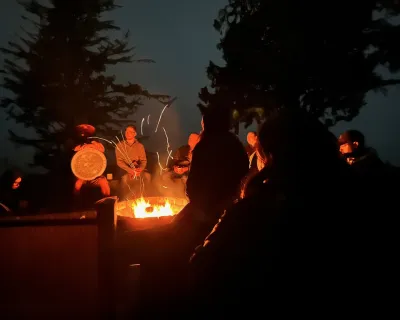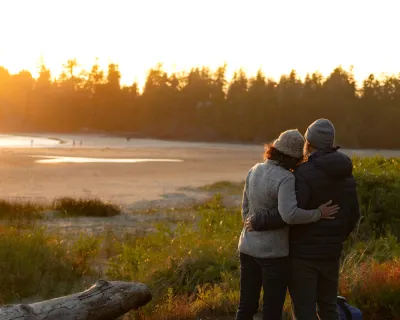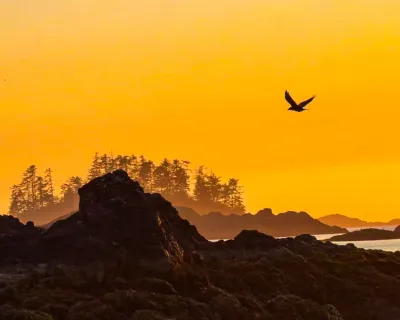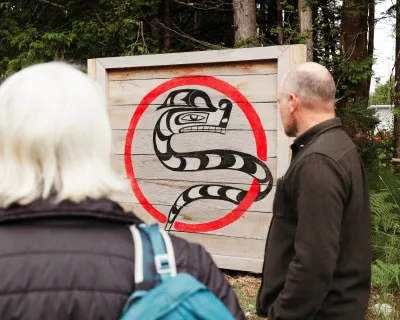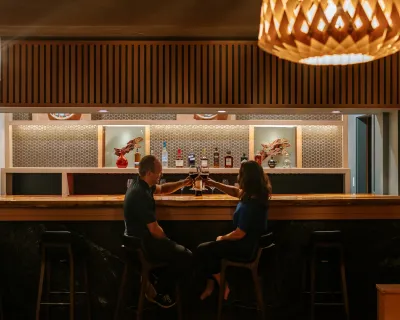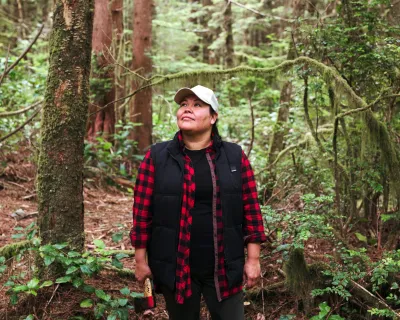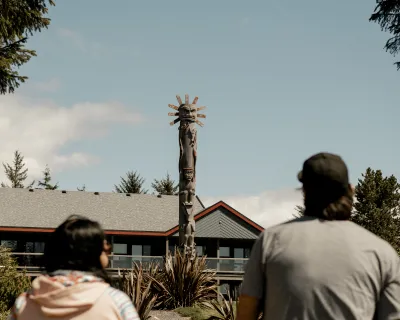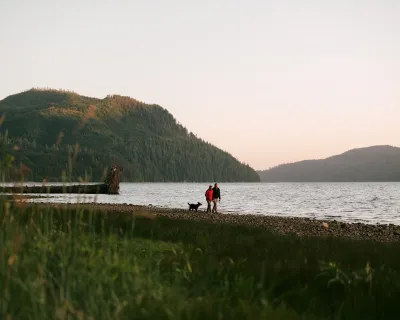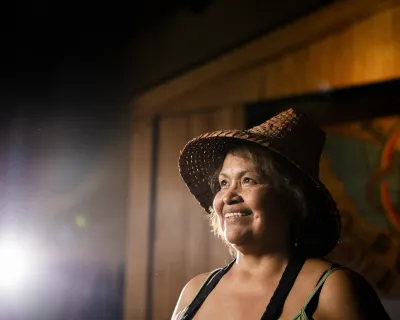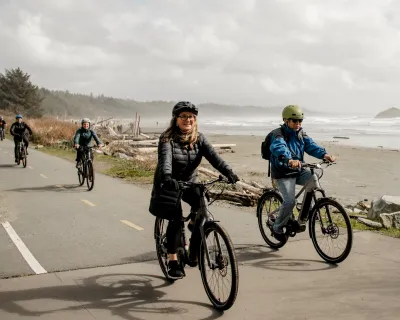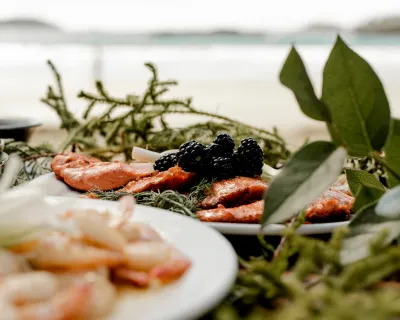Into the lair of the Great Bear
A voyage along the coast of B.C.’s Great Bear Rainforest reveals nature at its most super natural
By MARK SISSONS
As dusk descends, an explosion of violence shatters the tranquility of the world’s largest remaining tract of unspoiled ancient temperate rainforest. The chase is on.
A frantic deer bolts from the woods only meters from where our zodiac floats on the glassy calm estuary waters. On its heels races a sea wolf in a blur of black fur and fangs. Nostrils flaring, tongues flapping, predator and prey swim straight toward us, then veer off across the inlet deep within B.C.’s Great Bear Rainforest.
Named for the grizzlies, American black bears and Spirit bears (a black bear born with a recessive gene that produces cream coloured fur) that inhabit its thickly forested islands and inlets, this vast, mostly uninhabited archipelago is twice the size of the Serengeti and stretches from the northern tip of Vancouver Island to the Alaska border. It is also home to countless species of birds, marine life and other mammals, including clever coastal wolves that hunt salmon from streams like bears and swim like sea otters.
“The Great Bear Rainforest is so remote that it’s one of the few remaining inhabitable parts of the world that is completely black at night on satellite images,” says Kevin Smith, owner and captain of the Maple Leaf, B.C.’s oldest operational tall ship. I’m aboard his 92-foot, two-masted, mahogany-lined schooner for a unique weeklong midsummer nautical natural history tour.
It wasn’t until the 1990s that environmentalists coined the name “Great Bear Rainforest,” and began drawing public attention to the devastating logging practices that companies were inflicting on what referred to as the Mid-Coast Timber Supply Area. In 2006, an agreement between the B.C. government and a coalition of conservationists, loggers, hunters and First Nations established a 400-kilometre-long protected coastal area.
Today, only a handful of tourist-toting ships like the Maple Leaf operate along the coast of this magnificently rugged, rain swept wilderness, where snowcapped peaks loom over precipitous, forested fjords that plunge into deep dark channel waters. Each day aboard the Maple Leaf brings fresh adventures. We take frequent shore excursions, marching through boggy estuaries searching for indigenous plants with names like Queen’s Cup and dwarf dogwood, Paintbrush and Devil’s Club. There are long soaks in hidden natural hot springs, forays in search of ancient petroglyphs, fishing off the Maple Leaf’s stern and sailing when weather permits. Most popular are evenings on deck spent feasting on freshly caught giant Dungerese crabs and jumbo prawns, washed down with fine B.C. and international wines.
Along the route, we encounter few other traces of humanity until we pay a visit to Klemtu, an isolated Kitasoo and XaisXais First Nations village of 400 only accessed by boat or plane. Adorned with the clan emblems of the eagle, wolf, killer whale and raven, Klemtu’s mammoth red cedar “Bighouse” hosts important cultural events – the naming of children, traditional potlaches and ceremonies to honour the deceased – that help to preserve Native culture all along this coastline.
The most magnetic lure for most of the Maple Leaf’s eight passengers is catching glimpses of whales, wolves, dolphins and, of course, bears. Since the elusive Spirit bear – estimated to now only number between one and 400 – rarely emerges from deep within the forests of Princess Royal and Gribble Islands until fall salmon spawning season, we pin our hopes on grizzly sightings. Turns out, they are all around us as we explore some of the same secluded bays, marshy inlets and swift flowing channels that Captain George Vancouver and other early European explorers once charted, and that First Nations peoples have called home for thousands of years.
During our first close encounter with grizzlies in one of this coastline’s many waterfall-draped coves, our zodiac silently glides toward shore, where we spot a 400-pound grizzly and her fluffy cub grazing on shoreline sedges and giant-leafed skunk cabbage. As our ursine neighbours munch their way toward the water’s edge, they take turns rearing up on hind legs to sniff for danger and locate each other in the tall sedge. Then, as suddenly as the deer and wolf had plunged into the water, so do the bears. Startled by something, they paddle past us like furry torpedoes, noses just clearing the water. Seconds later, they clamber up onto the safety of the far shore. Then retreat into the deep, dark woods. Just before they disappear, the curious cub can’t resist glancing back at these colourful creatures that have respectfully and peacefully entered the lair of the great bears.
IF YOU GO
About Maple Leaf Adventures
Voted one of National Geographic Traveler’s Tours of a Lifetime, Maple Leaf Adventures offers several small group, multi-day sailing cruises into the Great Bear Rainforest between April and October, as well as tours to Haida Gwaii, the Gulf Islands, Vancouver Island and Alaska’s Inside Passage. For more information, visit mapleleafadventures.com or call 1-888-599-5323
Getting there
The Great Bear Rainforest trips start in Bella Bella and end in Prince Rupert, both of which are accessible by regular, daily commercial flights. Maple Leaf offers complete travel planning assistance and arranges for taxi or shuttle services to and from airports.
Staying there
Prince Rupert has a range of hotels and motels, including the Crest Hotel, which offers panoramic waterfront views. In Bella Bella, no accommodation is necessary because guests of Maple Leaf Adventures arrive and depart for the Great Bear Rainforest on the same day.
Things to do
In Prince Rupert, explore the historic Cow Bay area, which is lined with interesting cafés and shops. From there, it is a short walk to the Museum of Northern B.C., which features traditional northwest coast architecture and exhibits that explore the fascinating history of the area’s First Nations. Also worth a visit is the Firehall Museum, which displays a rebuilt 1925 R.E.O. Speedwagon fire engine. Prince Rupert is also a world famous sport fishing destination.
Conservation
For more information about the Raincoast Conservation Foundation’s ongoing efforts to protect the lands, waters and wildlife of coastal British Columbia, visit www.raincoast.org

